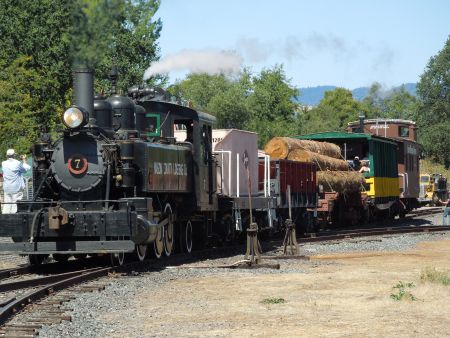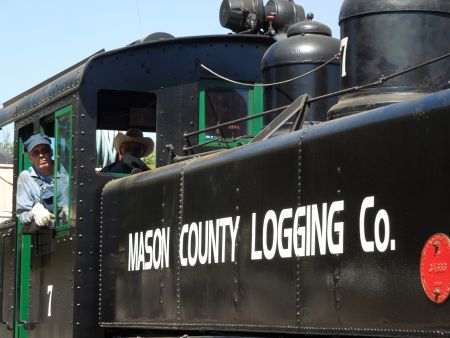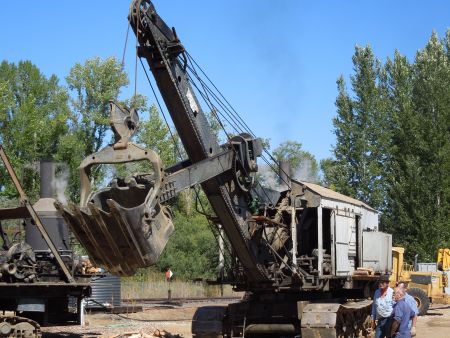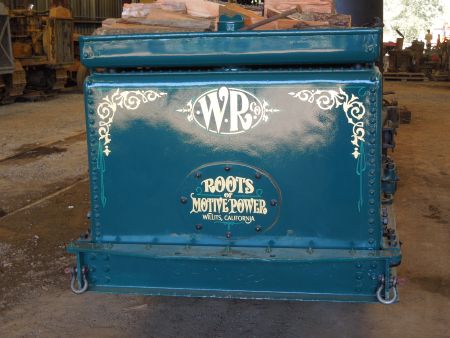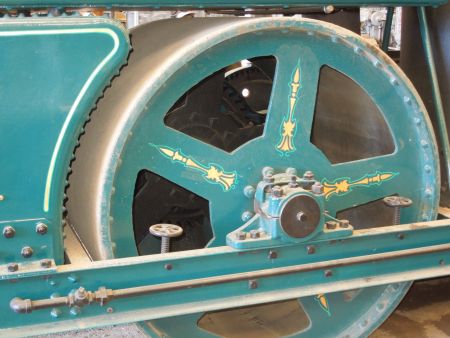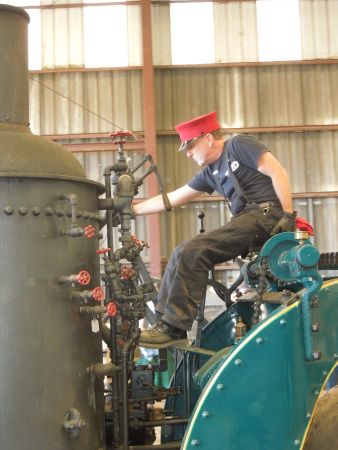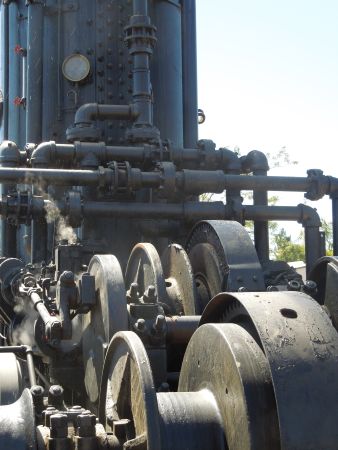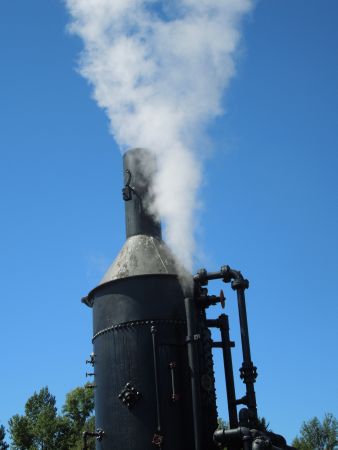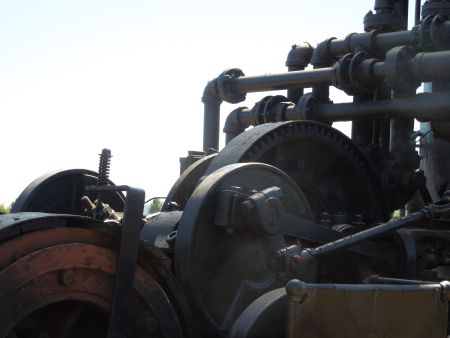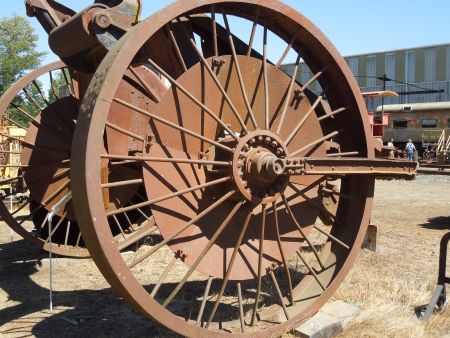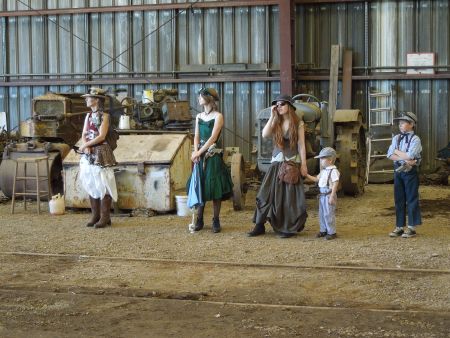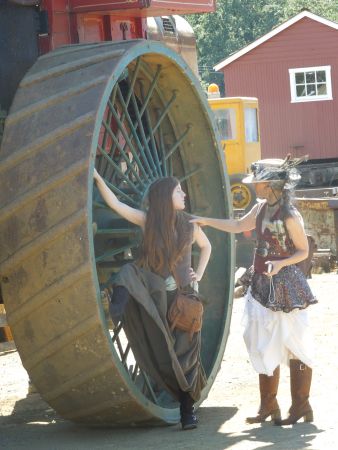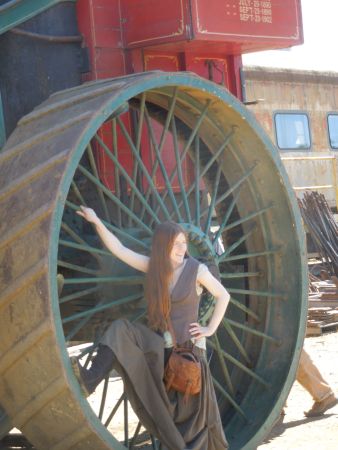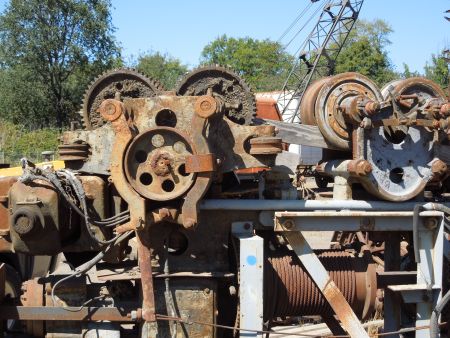Roots of Motive Power steams up their locomotive, steam shovel, crane, donkey engines and steamrollers several times a year. They offer free steam train rides around the compound. Their space is right next to the Mendocino County Museum and right across the street from the park where the Kinetic Carnivale is held.
The train ride was wonderful! Lillian and I rode it twice, in the caboose, a car that does not exist on modern trains. Many modern trains have a second engine as the last car. Since some trains make their runs on the same track, they have the second engine on the end, load up the back-again passengers, fire it up and back they go.
A ROMP volunteer rode with us. He is a semi-retired videographer who got interested in trains when was tapped to help save the Skunk Train several years ago. Since then he has been at many of the Steam Ups, and goes to other steam-train events in northern California.
The volunteers have been well-trained to ask for donations, even though the rides are free. With fuel and everything, it costs about $2,000 to fire up all the historic machines.
ROMP’s steam crane was a wonder, but I liked the steam shovel better. Maybe it’s because of Mike Mulligan and His Steam Shovel, a book I read when I was a wee girl. Remember this, anyone? Mike and Mary Ann, his steam shovel, are about to be put out to pasture because she is a tired old steam shovel, not like the shiny new diesel shovels. Mike offers to prove to the townspeople that he and Mary Ann are still useful, by digging the cellar of the new city hall in one day. They do it, but literally dig themselves in deep in the process. Does the story have a happy ending? It was written in 1940 or something; kids’ books had happy endings, so of course it does. I like steam shovels. That’s what I’m trying to say here.
They also had a jen-you-wine steam roller, too, and it was pretty cool.
This was the coolest.
This yarder, also known as a donkey engine, powered a winch. In Willits, it would have been used for dragging logs, but donkey engines were found anywhere you might need a winch – shipyards, lumber yards, mills or large construction sites.
From the train, I saw this in the back lot. I asked our guide if it was a caisson (if it were, that would be one humongous cannon!). He said it was not. This piece of equipment was also used to move logs.
Many of the steam-punk group wandered over and took the train rides. As you can see, several of them took advantage of the machines to choreograph fashion shoots.
Many of these machines have a plaque that shows where they were made. It’s a logo or an advertisement. This connects history for me. Something made in Erie, Pennsylvania… did it come here by ship, around Cape Horn? Did it come by train? (That would be perfect!) The Portland Oregon foundries forged apparatus used in Willits, to help with the lumber business, or gold-mining. Ships built in Seattle brought equipment made in Seattle to San Francisco, and then trains brought it… here. This makes history more real than a dry list of dates and facts. There were people in that foundry in Portland; men on that ship (and probably a few women too, even if they don’t get talked about); families in Willits counting on a replacement part or a new engine to keep the business alive. Connecting the dots.

